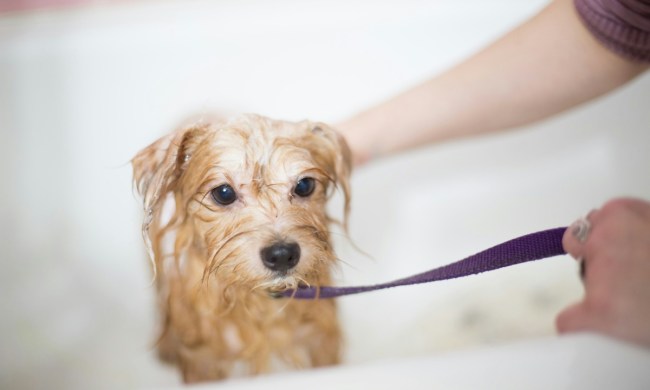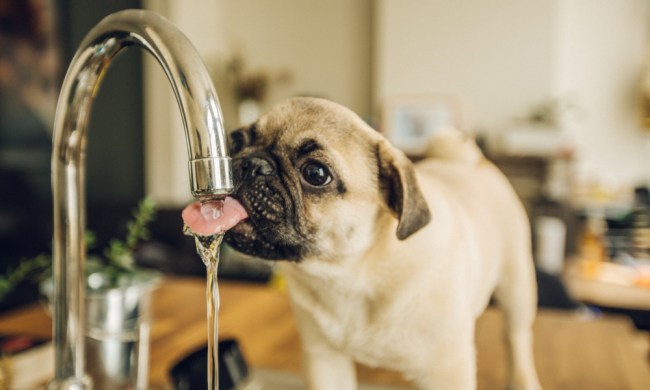On December 30, 2020, the U.S. Food and Drug Administration (FDA) issued a recall of several Sportmix pet food products after reports of 28 canine deaths and eight other illnesses linked to the food. Midwestern Pet Foods Inc., the manufacturer of Sportmix products, makes both dog and cat food items, but at this time no feline illnesses have been reported. Here’s what we know so far:
- Many Sportmix-brand pet food products have been found to contain possibly lethal levels of aflatoxin, which acts as poison when ingested by pets.
- Symptoms to look out for include diarrhea, vomiting, lethargy, loss of appetite, and jaundice.
- These products are typically available at large retailers such as Pet Club and Tractor Supply Co., so all pet parents should double-check their pantries for these products.
- If you believe your pet has ingested some of the recalled food, contact your veterinarian immediately, whether or not your pet shows symptoms of poisoning.
Why was a recall issued?
According to the FDA’s alert page for this recall, certain Sportmix pet food products were voluntarily recalled by Midwestern Pet Foods after tests showed excessive levels of aflatoxin in the affected food. Aflatoxin is a toxin from the mold Aspergillus flavus that can be present with or without the occurrence of visible mold — meaning you can’t tell whether your Sportmix product “looks safe.” The levels of aflatoxin found in the recalled products are potentially lethal, and the products should not be fed to pets or kept anywhere where an animal might find them.
Since the FDA and the product manufacturer are conducting further safety studies, the FDA’s recall alert page will be continually updated as new information becomes available.
What are the adverse effects of aflatoxin in pets?
Because pets don’t eat a varied diet, anything that’s in their food can build up in their body over time, so symptoms may not be sudden or present at all (via FDA). This makes liver damage a large concern with any kind of toxicity, as the liver is the organ mainly responsible for flushing toxins from the body. Even if no other symptoms are present, potentially fatal liver damage is still possible; this is why it’s so important to check in with your vet if you think your pet might’ve consumed any of the affected products.
Jaundice is one of the key symptoms when it comes to liver damage. Although it looks quite similar to jaundice in people, for pets, it’s important to look out for yellowing of the eyes or gums, as fur might be covering their skin. Other symptoms to watch for include lethargy, loss of appetite, vomiting, and/or diarrhea.
Which products are affected?
December’s recall encompasses nine lots of dry pet food, for both dogs and cats, including:
- Sportmix Energy Plus, 50-pound bag
- Exp 03/02/22/05/L2
- Exp 03/02/22/05/L3
- Exp 03/03/22/05/L2
- Sportmix Energy Plus, 44-pound bag
- Exp 03/02/22/05/L3
- Sportmix Premium High Energy, 50-pound bag
- Exp 03/03/22/05/L3
- Sportmix Premium High Energy, 44-pound bag
- Exp 03/03/22/05/L3
- Sportmix Original Cat, 31-pound bag
- Exp 03/03/22/05/L3
- Sportmix Original Cat, 15-pound bag
- Exp 03/03/22/05/L2
- Exp 03/03/22/05/L3
If you have any Sportmix food in your home, check the back of the bag to find lot information. This will help you identify whether your bag is part of the affected lots. You’re looking for a three-line code that begins with an expiration date and lot number, in the same format as listed above: “Exp 03/03/22/05/L#/B###/HH:MM.”
What to do if you find this food in your home
First, take care of your pet before you take care of the food. A lack of symptoms does not necessarily mean a lack of toxins in the body. Please, contact your vet ASAP. The FDA recommends taking a picture of the lot information on the bag, as well as writing down as much of your pet’s dietary history as you can remember.
Of course, don’t feed the affected food to any animal; make sure to throw it away in a secure fashion so that no pets or wild animals will be able to get into it. Calling the manufacturer’s number on the product label is a good way to learn exactly what you need to do (via FDA). Although no people have reported any symptoms after handling the recalled food, you should wash your hands thoroughly to make sure they’re clean. Sanitize your pet’s bowls and food storage containers with bleach before rinsing and drying thoroughly.
If your pet experiences any symptoms, the FDA encourages owners to file a case report and a pet food complaint. You can use the agency’s online Safety Reporting Portal or contact your state’s FDA Consumer Complaint Coordinators. You should also ask your veterinarian for assistance with this process, since many case reports are followed up with diagnostic testing anyway. Their expertise and knowledge of your pet’s medical history will be another helpful tool to fight against this deadly toxin and provide the FDA with as much information as possible. With vigilant owners and trusted vets by their sides, our pets can be kept safe from this and future contaminations.
In other news, there have been tick collars linked to pet deaths. Read all about it to ensure your fur babies are safe from these.




